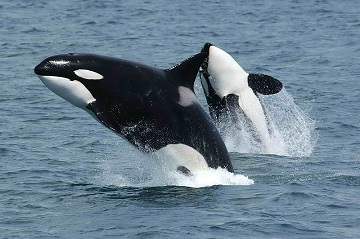590421-southern orcas.jpg

Orcas, also known as killer whales, off the coast of Alaska. Credit: Robert Pittman, NOAA
Killer whales are a bit provincial. They’re split into small regional populations that stay on their own -- they almost never interact with others. The smallest of these groups is the Southern Resident population. It’s found in the Pacific Northwest. There are so few of the whales that they’re listed as an endangered species.
The population is split into three smaller groups, known as pods. Each pod consists of several families, which are headed by older females. Each pod has its own range, and even its own dialect.
All three pods spend most of the year around Washington’s Puget Sound, where they gorge on Chinook salmon. During the winter, though, they range far afield. Whales have been tracked as far north as Alaska and as far south as central California -- up to thousands of miles in a single season.
The total population of Southern Residents has never been big. Estimates say there probably were a couple of hundred of them in the 19th century. But whaling, plus capture for marine parks, drastically reduced the numbers. New protection policies produced a rebound, but it didn’t last. In recent years, the number of whales has remained in the mid-70s. There have been few new births, and there are more newborn males than females, which makes it harder to rebuild the population.
To add to their woes, the number of salmon has gone down, while pollution and boat noise have gone up -- increasing the pressure on this isolated group of killer whales.

